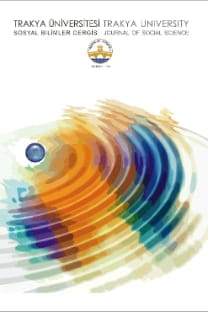OSMANLI DİPLOMASİSİNDE BATI İMGESİNİN DEĞİŞİMİ VE ELÇİLERİN ETKİSİ (18. ve 19. Yüzyıllar)
Toplumların birbirini algılayışları, farklılıkları yorumlayış biçimleri, gündelik yaşamdan politikaya, kültürel ilişkilerden diplomasiye değin geniş alanda sonuçlar doğurabilmektedir. Geleneksel toplum yapısının hakim olduğu dönemlerde farklı kültürlere olan bakış daha üsten ve bir o kadar da önyargılı olmuştur. Özellikle farklı inanç alanları karşılıklı olarak birbirini tanımlarken kendi kültürel referanslarını esas almışlardır. Aynı durum Osmanlı toplumunun dış dünyaya bakış açısında da söz konusudur. Osmanlı Devleti’nin klasik dönem boyunca kendi dışındaki kültürlere ve dünyaya bakışı ile 18. yüzyıldan sonraki tutumu farklılıklar içermektedir. Bunda Batı’da yaşanan sosyo-ekonomik gelişmelerin Osmanlıları etkilemesi kadar resmi görevlerle dışarıya gönderilen elçilerin tuttukları raporların ve sefaretnamelerin de etkisi büyük olmuştur. Sefaretnameler doğru ve yanlışlarıyla Batı’daki gelişmeleri ve yaşam biçimlerini Osmanlı başkentine taşımışlardır. Bu makalede Osmanlıların Batıya bakışında yaşanan değişim sürecinin kırılma noktaları ile söz konusu gelişmede sefaretnamelerin rolü incelenmektedir. Böylelikle Osmanlı Devleti ile Batılı devletler arasındaki etkileşimin kaynakları ortaya konmaktadır
Anahtar Kelimeler:
Diplomasi, Elçilik, Sefaratname
The Changing of Western Image in the Ottoman Diplomacy and the Influence of the Ambassadors
The perception among the nations recognizing each other and the interpretation of the differences between them reveals many donsequences concerning wide areas, ranging from daily life to politics and from culture to diplomacy. During the era when traditional society was valid, the perception of recognizing other cultures was rather in terms of prejudice. Especially in the matter of defining each other, almost every society depend ontheir own culturel referances as basis. Same can also be said for the Ottoman society. The Ottoman Empire’s point of view regarding other cultures and the world abroad differs from classic period to the 18. Century onwards. The major influences to this cahnge are the socioeconomic developments in the West and the reports and the sefaretnames which the Ottoman ambasadors regularly reported to the capital. sefaretnames casually brought the view of Western developments and life style, though sometimes positively and sometimes negatively, to the Ottoman capital. This study examines the milestones in the process of shaping of the Western image in the Ottoman Empire and the role of sefaretnames during this process, and aims at mentioning the sources of interaction between the Ottoman Empire and the Western states
Keywords:
Diplomacy, Ambassador, Sefaratname,
- ISSN: 1305-7766
- Yayın Aralığı: Yılda 2 Sayı
- Başlangıç: 2000
- Yayıncı: Trakya Üniversitesi Sosyal Bilimler Enstitüsü
